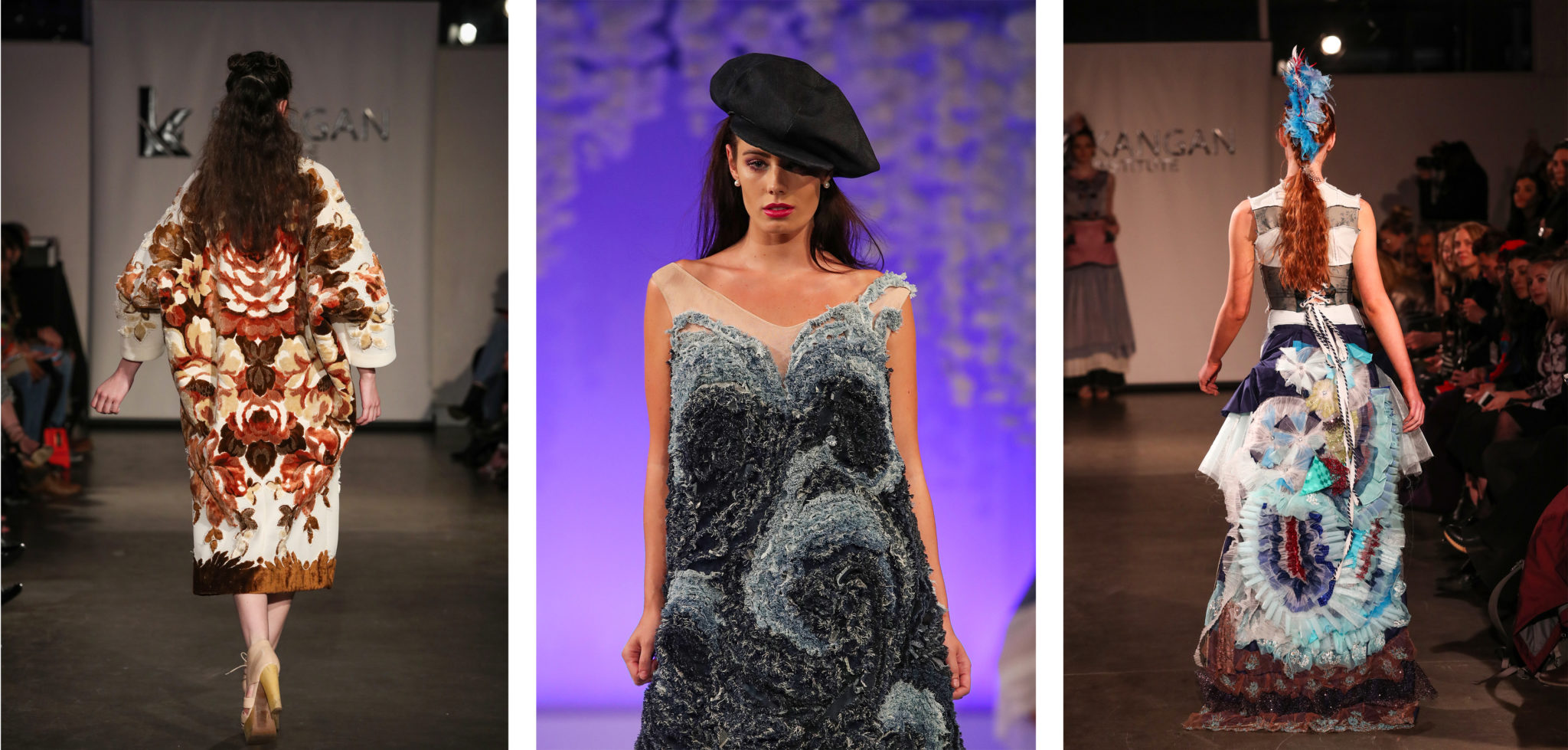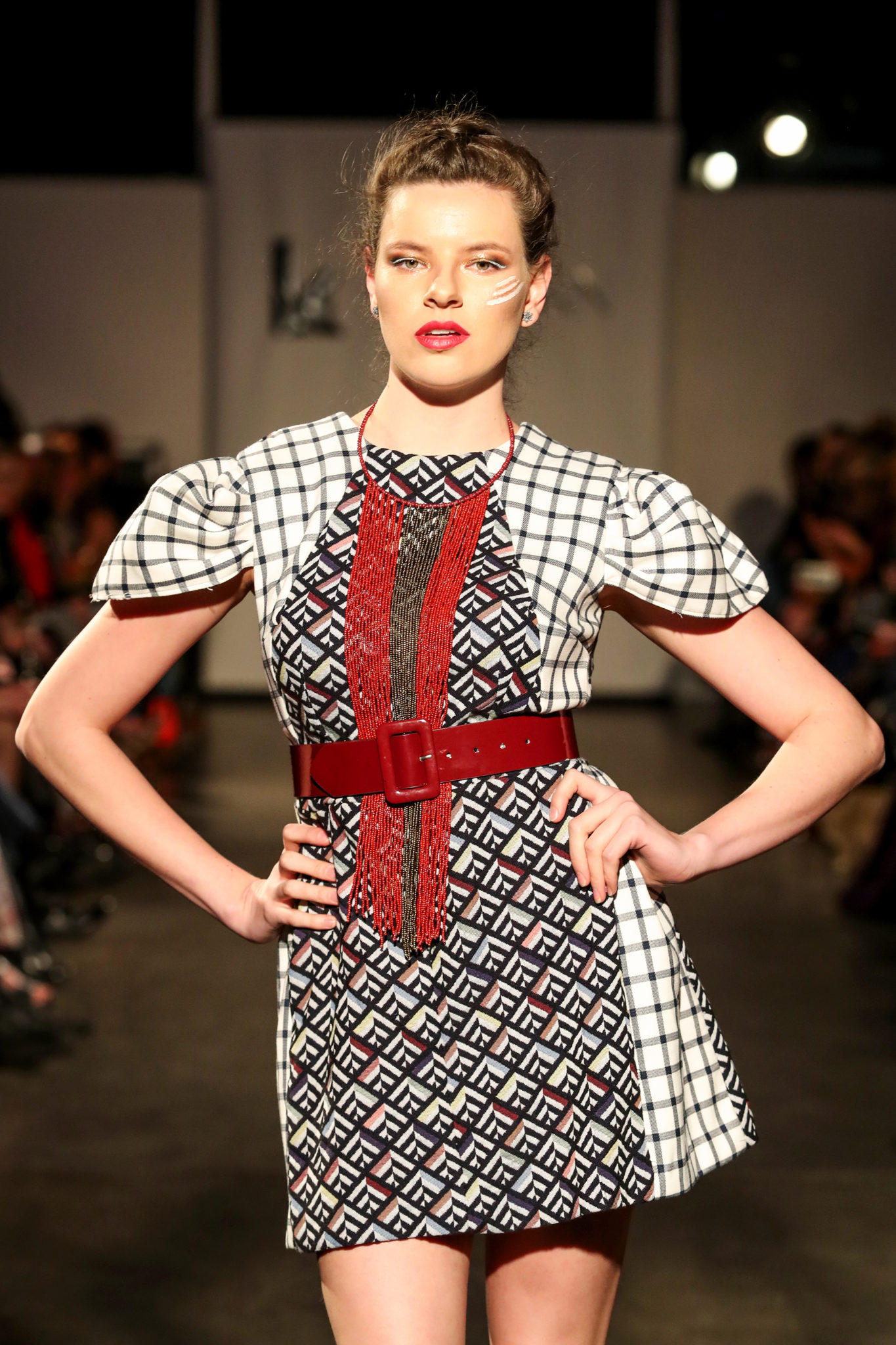
Fashion Focus: Rags to Runway
We all know the damage fast fashion does to both people and planet – someone, somewhere is always paying the true cost of that bargainous shirt we’re encouraged to wear once and throw away. With all of us in the industry – yep, as consumers/wearers of clothes we’re right in there – bearing responsibility for shaking things up, we love hearing about people and projects helping drive the revolution.
It’s why we were so excited to read about the work Melbourne’s Kangan Institute is doing with its Diploma of Applied Fashion Design and Merchandising – for the third year running, its Rags to Runway program is tackling fast fashion’s ethical and environmental issues head on by challenging learners to rethink how and where they source their materials. Students are tasked with using recycled textiles, paper and leather in a collection that’s showcased at Melbourne Fashion Week – putting upcycling front-and-centre of the mainstream fashion industry. With this year’s theme of Great Southern Style showing at Fashion Week on 4 September, we sat down with teacher Vicki Nicola and Applied Fashion Design and Merchandising student Amy Butler to find out more.
Vicki, have you seen a shift towards sustainability within fashion education? If so in what ways, and why is it important?
The slow fashion revolution is happening right now, and sustainable design and production techniques – such as zero waste pattern designing and using offcuts and textile waste from manufacturers – are becoming a bigger part of fashion education. It’s a really exciting shift because we’re preparing the next generation of fashion leaders to make a positive difference in this evolving industry. I think it’s important that we continue to explore innovative ways to inspire students, designers and the wider community to embrace sustainable fashion, and the Rags to Runway project is a great example of that.
What are your thoughts on fast fashion?
Fast fashion may have a cheap price tag but it comes with massive ethical and environmental costs. A recent survey by YouGov, for example, found that 3 in 10 Australians have thrown away clothing after wearing it just once. This cheap throwaway mentality adds up to an incredible amount of waste and we really need to ask the question – when is enough, enough? Through education we have an opportunity to bring ethical, sustainable fashion into the spotlight and make it an important part of fashion design, production and consumer behaviour.
What have been your personal highlights of working on Rags to Runway?
It’s been amazing to work with [course partners] the Australian Red Cross, and to see the Rags to Runway project develop into an important part of our curriculum and Melbourne Fashion Week. It’s also been great to see the transformation of our students as they gain skills, experience and confidence to convert discarded garments and materials to spectacular runway pieces!
What part do you think designers need to play in creating an ethical fashion industry? And what part can the consumer play?
Designers will always be at the forefront in shaping the buying trends of consumers, and emerging designers now have the exciting opportunity to lead the way in creating a sustainable fashion future. Our Rags to Runway project will show that it’s entirely possible for upcycled and recreated fashion to look amazing, so hopefully people will come to the show and gain some inspiration on how they can do their part for sustainable fashion.

Amy, what are your thoughts on fast fashion?
I feel as though we can no longer rely on it to fill our wardrobes – the social and environmental impact of fast fashion on our society has reached a point that now requires action. People have become accustomed to a ‘see now, buy now’ lifestyle where everything is available immediately at their fingertips, but I think the changes need to start with the rate and volume in which we consume products. It’s going to be a hard habit to break, but I believe people are slowly becoming more aware and conscious of the wider issue.
What are the challenges associated with using recycled materials in your work?
The main challenge to overcome is that you have to let yourself get inventive with what you have. It’s easy to draft patterns and design garments when you have access to endless amounts of fabrics and supplies, but it takes a certain kind of creativity to work with the constraints of a ready made item. It asks you to question your preconceived ideas around how garments are intended to perform – how can you give a sleeve, a pocket, a collar, or a pant leg a new context and meaning. For me personally, I prefer to keep the garments close to their original form – I want to work with the garment rather than against it, creating folds, tucks and gathers where they previously didn’t exist.
How do you feel about the end results of your work on Rags to Runway?
I’ve always tended more towards minimalism within my designs, focusing on structure, form and texture, and sequentially achieving this through subtle manipulations. I wanted to maintain the integrity of the original garments, providing more of a slow transition into an altered form. The process of re-purposing garments and textiles that have been discarded is very fulfilling and I’m glad to have had this experience. The opportunity to showcase my work on the runway at a Melbourne Fashion Week event is an added bonus and will be an amazing addition to my resume!
Do you plan on continuing to use recycled and/or sustainable materials in your work long-term?
Absolutely. I couldn’t think of entering into a workplace that doesn’t enforce sustainable practices, or at least actively work towards being more conscious. Whether this be utilizing dead-stock and off-cuts, removing plastic from supply chains or producing on-shore in Melbourne for close monitoring, I think it’s something we no longer have a choice around. We have to preserve and maintain our current environment – after all, we only have one.


